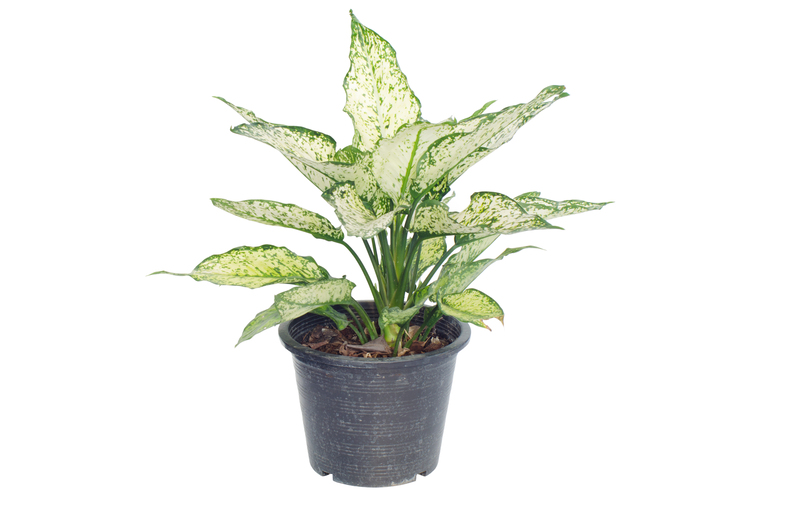Strengthening your garden against harsh winds
Posted on 20/06/2025
Strengthening Your Garden Against Harsh Winds: Comprehensive Tips for Windproof Landscaping
Is your beautiful garden constantly battered by unrelenting winds? Are fragile plants, shrubs, and trees suffering from wind damage? Strengthening your garden against harsh winds is essential for maintaining a vibrant, healthy, and productive outdoor space. In this detailed guide, we explore proven strategies, practical tips, and expert insights for windproofing your garden--ensuring your plants thrive even under the most challenging weather conditions.
Why Is It Important to Protect Your Garden from Strong Winds?
Strong winds can devastate gardens in many ways:
- Breakage or uprooting of delicate plants, young trees, and climbing vines.
- Excessive transpiration leading to water loss and plant dehydration.
- Soil erosion, which strips away vital nutrients and structure.
- Reduced pollination due to disrupted insect activity.
- Physical injury from flying debris and sandblasting effects.
Strengthening your garden against strong winds is not just an aesthetic decision; it's critical for the health and productivity of your garden. Let's explore effective ways to fortify your outdoor oasis.

Understanding Wind Patterns in Your Garden
Identify Wind Direction and Intensity
Before implementing solutions, it's crucial to assess wind flow across your property. Observe where the wind hits hardest and track prevailing wind directions throughout the year.
- Use weather apps or local climate data for regional wind trends.
- Walk around your garden during windy periods and note exposed areas.
- Pay close attention to microclimates--protected corners, open patches, and spots where wind accelerates due to funneling between buildings or fences.
Site Analysis
Map out your garden, marking areas with higher wind exposure, and record plant losses or damage patterns. This will guide your windproofing strategy.
Smart Windbreak Design
Living Windbreaks: Trees and Shrubs
Planting wind-resistant trees and dense shrubbery is one of the most effective long-term solutions for shielding your garden from harsh winds. The goal is to create a permeable barrier--slowing, not stopping, the wind.
- Choose suitable species: Opt for hardy, fast-growing trees such as conifers (pine, spruce), hawthorn, holly, and native hedgerows adapted to your climate.
- Structure your windbreak: Plant in multiple rows, layering tall trees at the back and shorter shrubs in front.
- Stagger plantings to encourage wind dissipation and prevent funneling effects.
Living windbreaks offer additional benefits: they provide wildlife habitat, enhance privacy, and add year-round beauty to your landscape.
Artificial Windbreak Structures
For more immediate results, or where space is at a premium:
- Install fences or screens made of materials that allow some airflow such as lattice panels, woven willow, bamboo, or slatted wood.
- Height matters: The windbreak should be at least as tall as the plants you wish to protect. A windbreak reduces wind speed for a distance of up to 10 times its height.
- Place windbreaks on the windward side (the side from which prevailing winds blow) for optimal protection.
Garden Layout for Wind Resistance
Strategic Plant Placement
Proper layout boosts your garden's ability to withstand strong gusts:
- Place larger, more resilient plants on the windward side to serve as sacrificial buffers for more sensitive species.
- Group plants together to create microclimates and reduce individual exposure.
- Use raised beds with sturdy edging to protect low-growing plants and enhance drainage.
Dense planting is advantageous--it reduces the wind speed at ground level, providing shelter for smaller, delicate plants.
Creative Use of Hardscaping
Elements like garden walls, boulders, or artful stone arrangements can break up wind flow and add structure:
- Position hardscaping elements to deflect gusts and diminish wind velocity.
- Pair with climbing or trailing plants for added stability and wind absorption.
Selecting Wind-Resistant Plants
Attributes of Wind-Resilient Species
- Flexible stems and branches that bend rather than break in high wind.
- Compact or low-growing habit to reduce exposure.
- Waxy or leathery leaves to minimize moisture loss and resist tearing.
- Well-anchored roots to hold soil and prevent uprooting.
Popular Wind-Tolerant Plants
Consider these options to naturally strengthen your garden against harsh winds:
- New Zealand flax (Phormium tenax): Striking sword-like leaves, extremely tough.
- Russian sage (Perovskia atriplicifolia): Woody stems, aromatic, suitable for exposed sites.
- Lavender (Lavandula): Compact, drought- and wind-tolerant.
- Sea buckthorn (Hippophae rhamnoides): Thrives in salt-laden coastal winds.
- Grasses: Switchgrass, blue fescue, and miscanthus are graceful and wind-flexible.
Establishing Wind Deflector Plants
Plant fast-growing annuals (such as sunflowers or Jerusalem artichokes) as temporary wind screens while slower-growing hedges become established.
Soil Management for Wind Protection
Preventing Soil Erosion
Wind erosion can rob your garden of nutrients and destabilize root systems. To prevent this:
- Apply mulch (wood chips, straw, compost) liberally to anchor topsoil.
- Plant groundcovers such as creeping thyme, ajuga, or clover for living protection.
- Create terraces on sloped land to slow runoff and wind.
Soil Enrichment
Strong, healthy plants are naturally more wind-resistant. Feed your soil with organic matter (compost, manure, worm castings) to promote deep rooting and robust growth.
Anchoring and Supporting Individual Plants
Staking and Tying
For young trees, tall perennials, and climbing plants:
- Use flexible ties and sturdy wooden or metal stakes.
- Support at two-thirds the plant's height for best stability.
- Check and adjust ties regularly--too tight, and you risk girdling stems.
Avoid rigid staking where possible, as slight movement encourages root development and stronger stems.
Guying Large Trees
For specimen or newly planted trees in exposed areas, use guy ropes anchored into the ground. Always use soft sleeves to protect bark and check tension frequently--removing support after the establishment period.
Temporary Wind Protection for Severe Weather
Use of Floating Row Covers and Cloches
- Lightweight horticultural fleece can be draped over delicate crops or blooms to protect from wind and temperature shock.
- Cloche tunnels (hoop houses or plastic domes) shield small plants.
Quick Erect Barriers
- Garden netting, hessian, or burlap screens supported on stakes work well during short spells of stormy weather.
- For container gardens, move pots to sheltered locations (against buildings, under porches) during wind events.
Maintaining a Wind-Resistant Garden: Ongoing Tasks
Regular Pruning and Thinning
- Prune trees and shrubs to maintain strong branching and prevent dense canopies that catch the wind like a sail.
- Remove damaged or weak wood promptly to avoid breakage.
Monitor and Repair Structures
- Check fences, screens, and stakes for signs of wear or looseness after storms.
- Replace or reinforce as needed to maintain optimal protection.
Mulching and Groundcover Renewal
Top up mulch layers and patch any gaps in groundcover to minimize bare soil exposure.

Special Considerations: Coastal and Urban Gardens
Coastal Area Challenges
If you garden by the sea, salt-laden winds can compound damage. Use salt-tolerant plants (like escallonia, tamarisk, or oleaster), and ensure windbreak materials are non-corrosive.
Urban Wind Tunnels
In cities, wind can accelerate between buildings. Install vertical gardens, trellises, or soft landscaping to disrupt wind flow and create inviting sheltered retreats.
Summary: Creating a Beautiful, Wind-Hardy Garden
Strengthening your garden against harsh winds is a holistic process that combines thoughtful design, plant selection, structural solutions, and ongoing attention. By:
- Analyzing your site and wind exposure
- Planning effective windbreaks using both live and artificial barriers
- Choosing wind-resistant plants and strategic layouts
- Managing soil and providing support structures
- Taking proactive, seasonal steps to maintain protection
You can transform a wind-beaten garden into a thriving, resilient haven for plants, wildlife, and people alike. Whether you're dealing with gusty flatlands, breezy coastal plots, or urban microclimates, the right windproofing strategies ensure your garden remains strong and stunning, season after season.
Frequently Asked Questions: Windproofing Your Garden
What is the best windbreak for small gardens?
Compact shrubs like boxwood, euonymus, or lavender hedges are great for small spaces. For instant results, install decorative trellises with climbing plants or permeable bamboo screens.
How do I protect potted plants from wind?
Group pots together for stability, choose low and heavy containers, and place them in corners or next to windbreaks. Move them indoors or undercover during major wind events.
Can mulch really prevent wind erosion?
Yes. A thick layer of organic mulch acts as a physical barrier, holding soil in place and regulating moisture lost through evaporation.
How long does it take for a living windbreak to become effective?
Most hedges or fast-growing trees begin to offer significant protection within 2-4 years of planting, but some instant hedging solutions are available from specialist nurseries.
Are there any garden designs especially suited for windy sites?
Cottage gardens--with their dense planting--absorb and diffuse wind well. Likewise, Japanese gardens often use natural rocks and wind-resistant evergreens for beauty and function.
Strengthen your garden against harsh winds and enjoy a beautiful, productive landscape--no matter the weather!



